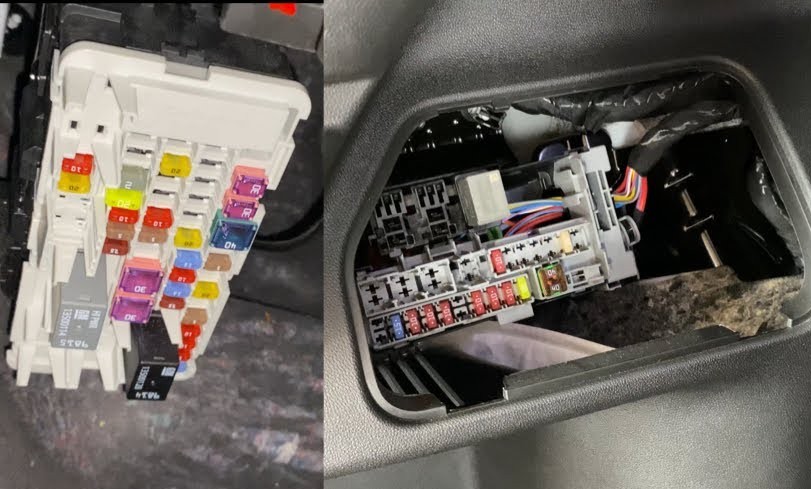Fuse Box Access Types for Automotive LED Installs
When installing LED kits in your vehicle, knowing how to access the fuse box is essential for a successful and safe installation. This guide will cover the common fuse box locations, their advantages, and best practices for tapping into them for your LED projects.
🚘 Understanding Fuse Box Locations
There are three primary fuse box locations in passenger vehicles:
- Cabin: Usually located in the passenger footwell or on the side of the dash.
- Trunk/Boot: Common in German luxury cars, providing access to rear-mounted components.
- Engine Bay: The least preferred option for interior LED installs due to exposure and routing challenges.
Cabin fuse boxes are preferred for their easy access, safe routing for interior accessories, and the fact that ignition fuses are often found here.
🔎 Passenger-Side Fuse Boxes (Ideal Case)
Passenger-side fuse boxes are easy to access in most modern sedans and coupes, especially American vehicles and Japanese imports:
- These boxes often house ignition fuses, lighting, and accessory ports.
- They are great for powering starlight kits, ambient lights, or other interior accessories.
However, there are instances when this area may not be usable, such as when blocked by panels or if there is no spare ignition fuse available.
🧳 Trunk Fuse Boxes (German Vehicles)
Trunk fuse boxes are commonly found in many BMW, Mercedes-Benz, and Audi vehicles:
- These are ideal for powering trunk-mounted starlight kit projectors, especially if the fiber bundle is routed up the C-pillar.
- Keep in mind that this may require longer wire runs for ambient kits and footwell lighting.
- Proximity to the battery is a plus, as many German vehicles have rear batteries.
⚠️ Engine Bay Fuse Boxes (Last Resort)
Engine bay fuse boxes are less ideal for interior installations due to exposure and difficult routing into the cabin:
- Using firewall grommets is necessary to enter the cabin safely. Make sure to find and pass the wire through a grommet without damaging it.
- This option is commonly used in trucks (like Silverado and Ram) when no interior fuse provides adequate power or space.
🔧 When to Tap Which Box: Regional Notes
Here are some regional notes on when to tap which fuse box:
- American Cars: Most have accessible fuse boxes inside, often near the front passenger footwell or behind a kick panel. Rarely need to tap the trunk or engine.
- Japanese Cars (JDM): Passenger fuse boxes are common, but often tight on space. Some Toyota and Honda models have simple trunk boxes, which are rarely tapped.
- German Cars: Cabin fuse boxes are often behind glove boxes or under odd panels. Trunk fuse boxes are more common. Consider a trunk tap if projectors are located in the trunk.
🧠 Pro Tips
To ensure a successful installation, keep these pro tips in mind:
- Always test fuses with a test light or multimeter before tapping.
- Label everything—fuse number and purpose for easy identification later.
- Avoid tapping airbag, brake, or critical safety systems to prevent issues.
- Use ring terminals and secure grounds nearby for a reliable connection.
- Route wiring cleanly and always zip-tie or tuck it behind panels to avoid damage.

